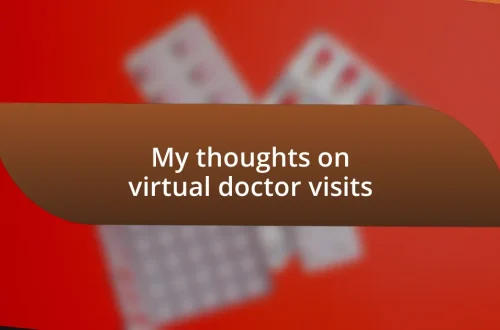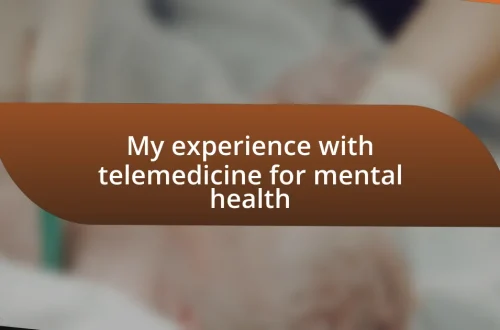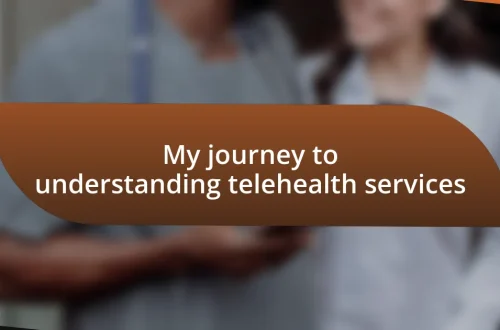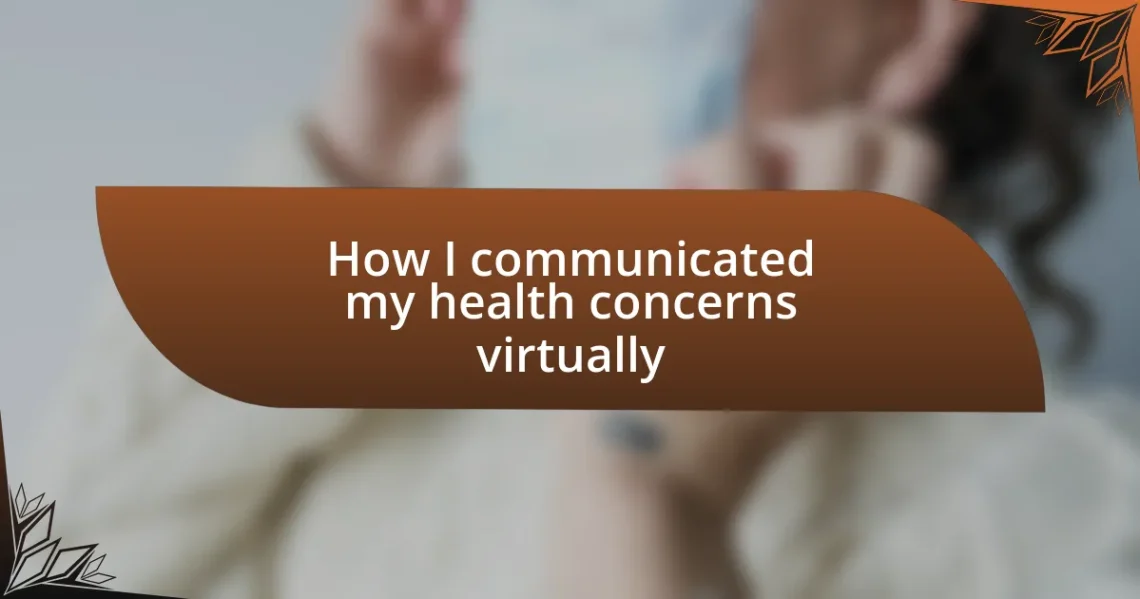
How I communicated my health concerns virtually
Key takeaways:
- Effective use of virtual communication tools enhances comfort and trust during healthcare conversations.
- Preparation, such as writing notes and ensuring technology works, is crucial for successful virtual appointments.
- Clear expression of health concerns, using specific examples and open-ended questions, fosters productive dialogue.
- Following up after appointments reinforces understanding and maintains a strong connection with healthcare providers.
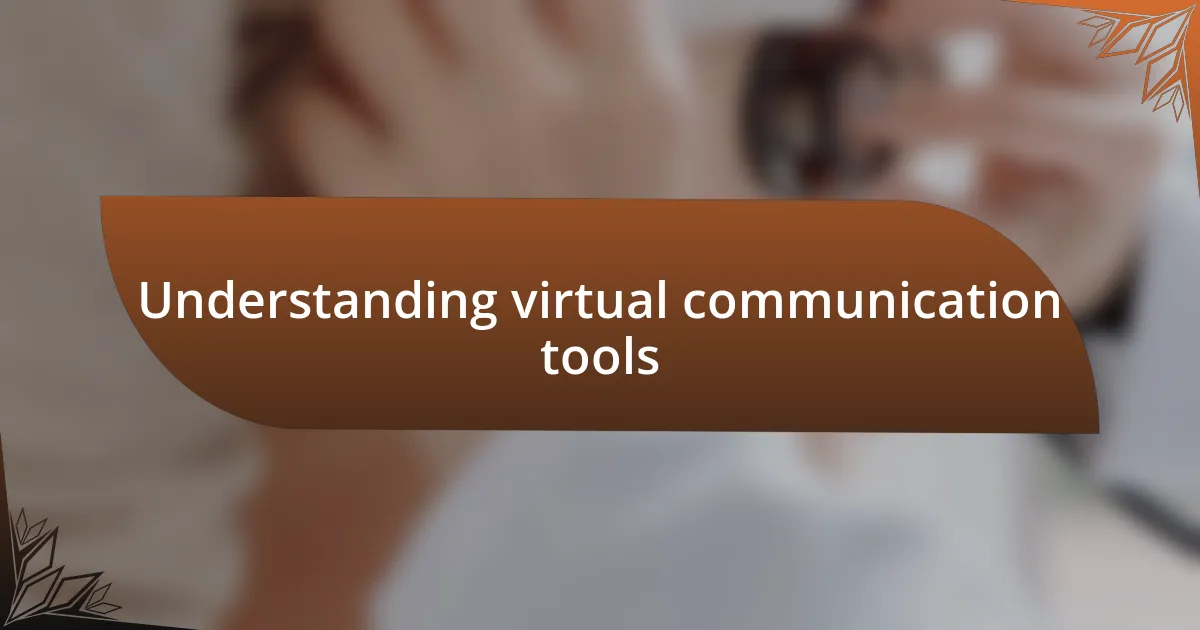
Understanding virtual communication tools
I’ve found that understanding virtual communication tools is essential for effectively sharing health concerns. For instance, when I first used video conferencing for a consultation, I was amazed by how a simple platform could bridge the gap between me and my healthcare provider. It made me feel more connected, almost like we were sitting in the same room, which eased some of my anxiety.
When dealing with sensitive health matters, the choice of tool can profoundly impact the conversation. I remember feeling nervous about sharing personal details during a chat on a messaging app versus a video call. It’s fascinating how the medium can influence our comfort levels and the depth of the discussion. Have you ever noticed how the tone shifts with different platforms?
In my experience, using secure and user-friendly applications not only enhances the conversation but also builds trust. For me, ensuring that my doctor was on the same platform gave me peace of mind, making me feel valued and prioritized. This level of accessibility can significantly change how we approach our health; it certainly did for me.
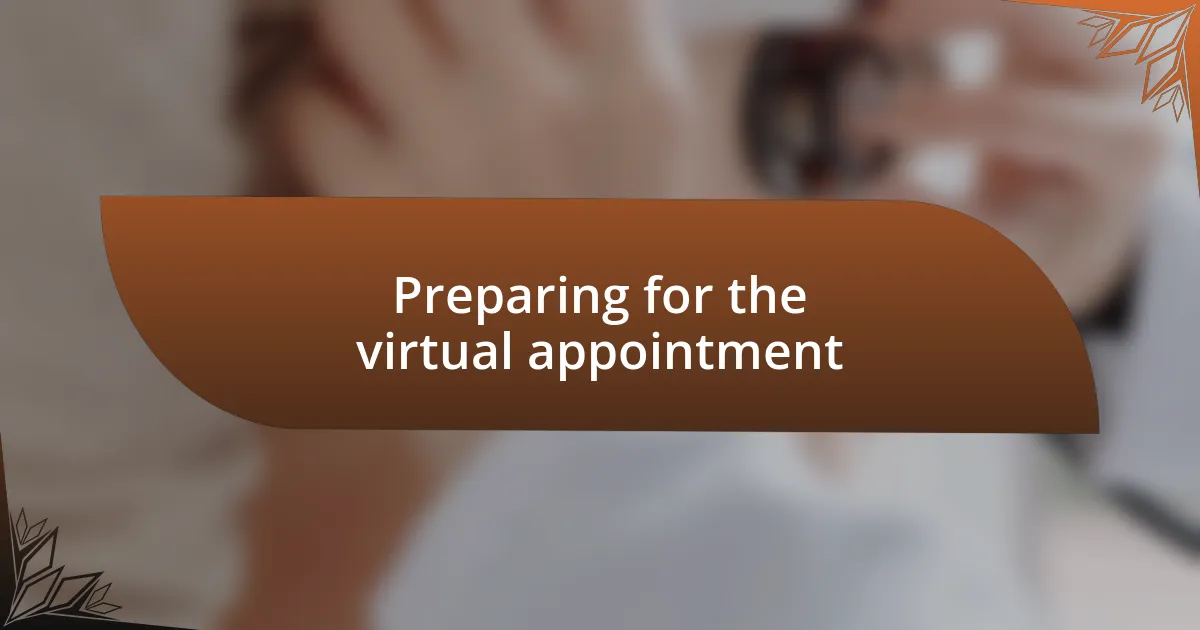
Preparing for the virtual appointment
Preparing for a virtual appointment requires thoughtful planning. I often spend some time jotting down my notes before the meeting, which helps me articulate my concerns clearly. It’s easy to forget important details in the moment, so having a written list not only organizes my thoughts but also calms my nerves.
I like to ensure my technology is set up properly ahead of time. A few days ago, I double-checked my internet connection, updated the app I was using, and even adjusted the lighting in my room. It’s surprising how a well-lit space can make you feel more engaged and confident during the appointment—don’t underestimate this aspect!
Having a quiet space for the conversation is crucial. I remember once being interrupted by my dog barking during a call, and that threw me off completely. Finding a distraction-free environment helps me focus on the conversation, fostering a better connection with my healthcare provider.
| Preparation Step | Importance |
|---|---|
| Writing Notes | Helps articulate concerns clearly |
| Checking Technology | Ensures a smooth, uninterrupted experience |
| Creating a Quiet Space | Minimizes distractions for better focus |

Effectively expressing your concerns
Effectively conveying my health concerns during virtual appointments has been a transformative experience for me. It’s not just about what I say, but how I frame it. Reflecting on times when I felt overwhelmed, I realized that breaking down my issues into specific points made it easier for my provider to understand my situation. For example, instead of saying I feel “not well,” I might detail symptoms like fatigue and headaches. This clarity fosters a more productive dialogue.
To further enhance my communication, I focus on these key strategies:
- Use specific examples: Rather than general statements, sharing concrete instances of when I experienced certain symptoms helps to paint a clearer picture.
- Ask open-ended questions: This encourages dialogue and invites the healthcare provider to delve deeper into my concerns.
- Be honest about my emotions: Sharing how I feel about my health—whether anxious, frustrated, or hopeful—allows for a more empathetic response.
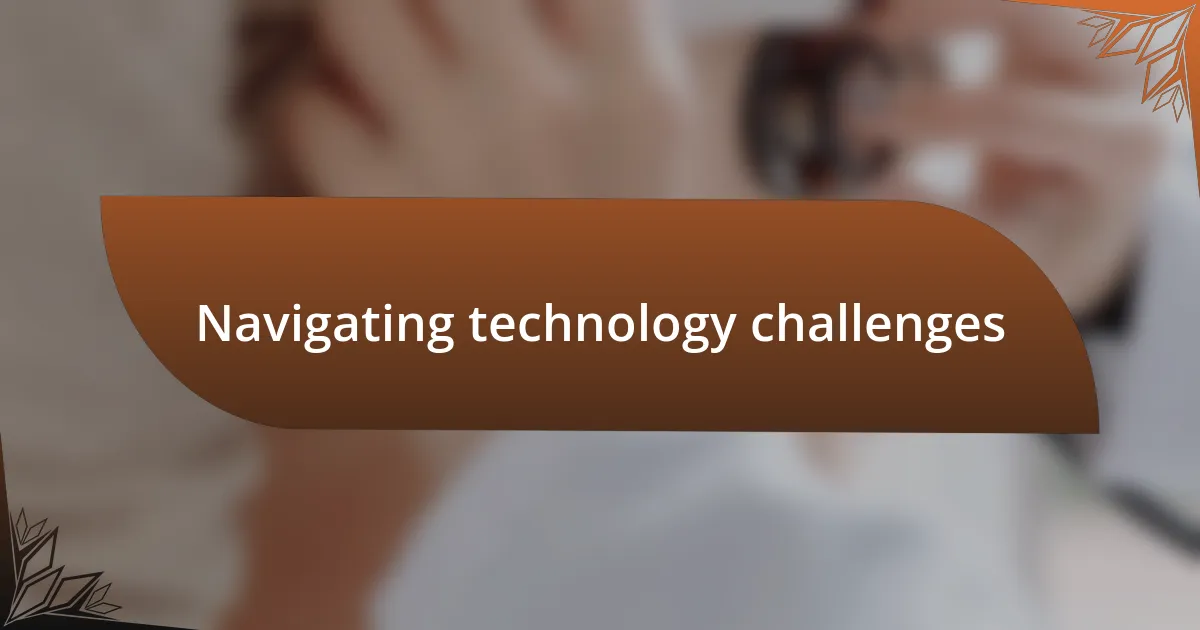
Navigating technology challenges
Navigating technology challenges can often feel daunting. I remember the first time I attempted a telehealth appointment; I was excited yet nervous about using the platform. The screen froze right when I wanted to explain my symptoms, leaving me frustrated. I think we can all relate to those moments when technology just doesn’t cooperate, right?
Sometimes, the small details make a big difference. Before my calls, I make sure to check my internet connection and familiarize myself with the software. I even keep my notes handy, so if a technical issue arises, I still have my information ready to share. It’s about controlling what I can, even when external factors are unpredictable.
When I encounter tech glitches during a call, I remind myself that my provider is likely facing similar challenges. I try to maintain patience and humor; after all, we’re both there for the same goal. Creating that shared understanding helps ease the tension and makes the interactions feel more collaborative. How would I feel if the roles were reversed? I know I’d appreciate a little grace.
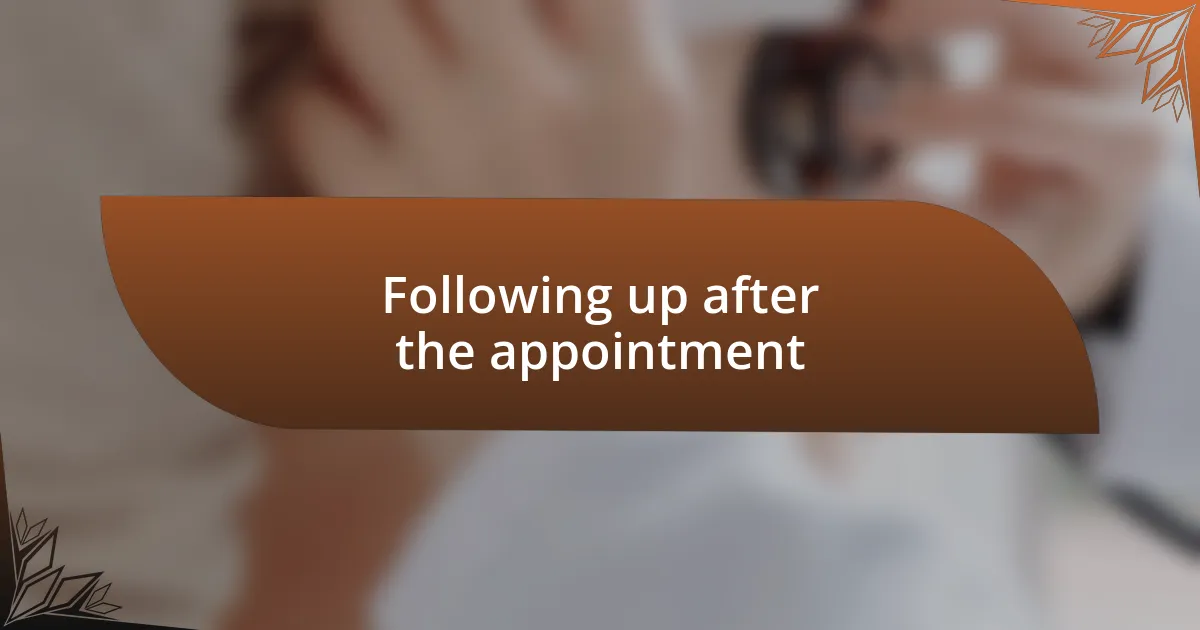
Following up after the appointment
Following up after your telehealth appointment is crucial. Right after my consultation, I usually jot down my thoughts and any lingering questions. This helps me articulate my concerns clearly if I need to reach out again. Have you ever left an appointment only to forget what you wanted to ask? I’ve been there more times than I’d like to admit.
Sometimes, I find myself reflecting on the advice given during the appointment. I remember a time when my doctor suggested changing my medication. I felt a mix of anxiety and hope, but it was the follow-up email I sent that solidified my understanding. I asked for clarification on potential side effects, which led to a deeper conversation and ultimately, more confidence in my treatment plan.
I often schedule a follow-up within a week or two to revisit any changes made. This regular check-in not only keeps my provider informed but also reassures me that my health is a priority. Isn’t it comforting to know that you can reach out at any time? I believe maintaining that connection can make all the difference in your healthcare experience.


